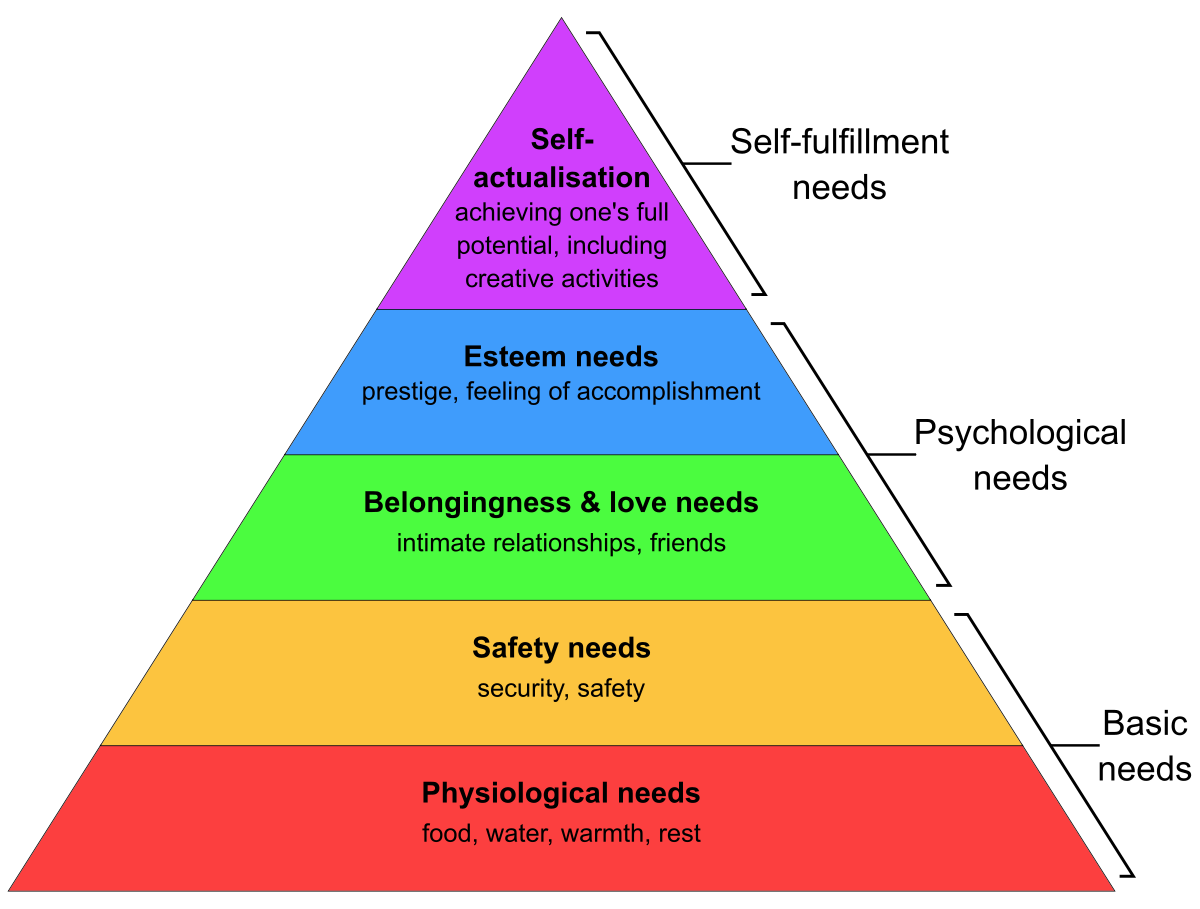The Needs Hierarchy Model
An Overview of Maslow’s Hierarchy of Needs
The needs hierarchy model developed by Maslow (1943) shows people have five levels of needs. The concept is based on the theory that lower-level needs must be satisfied, or at least partially satisfied, before the higher-level needs emerge and can be addressed.
The five levels, from lowest to highest, are physiological, safety, social, ego, and self-actualization (developing full potential; see Figure X-1).

|
Maslow’s hierarchy of needs models the basis of motivation, which he developed over years of study. The first and broadest level of needs is physiological need. This level provides the basics of life, such as food, shelter, and physical comforts. The second level involves safety (physical and job security), a high priority for most people. The top three levels of motivation (belonging, esteem, and self-actualization) present the biggest leadership challenges. It is difficult to develop an environment that allows team players to find opportunities for self-actualization and to be respected and empowered by fellow team players to continue positive and productive individual efforts. Employees move up and down the pyramid during their employment experience. The highest and most influential level of motivation (self-actualization) is often short-lived. Employees can attain a temporary “high” from personal achievement and then fall back to another level on the pyramid very quickly. Work experiences offer continued challenges while employees are pursuing self-actualization. Good leaders work hard to provide the necessary resources, planning, guidance, and support to achieve desired results (on time and under budget). A positive work environment —which supports employee achievement, recognizes success, and adjusts for failures— is necessary when motivating employees.
People who possess high achievement needs are people who always work to excel by particularly avoiding low-reward, low-risk situations and difficult-to-achieve high-risk situations. Such people avoid low-risk situations because of the lack of a real challenge and their understanding that such achievement is not genuine.
They also avoid high-risk situations because they perceive and understand it to be more about luck and chance and not about one’s own effort. The more achievements they make, the higher their performance because of higher levels of motivation.
These people find innovative ways to achieve goals and consider their achievement a better reward than financial ones. They make calculated decisions, always appreciate feedback, and usually work alone. Individuals motivated by needs for achievement usually have a strong desire of setting up difficult objectives and accomplishing them.
Their preference is to work in a result-oriented environment and always appreciate any feedback on their work. Achievement-based individuals take calculated risks to reach their goals and may circumvent both high-risk and low-risk situations. This personality type believes in a hierarchical structure derived primarily by work-based achievements.
- Need for Power
The need for power is the desire within a person to hold control and authority over another person and influence and change their decisions in accordance with his or her needs or desires.
The need to enhance their self-esteem and reputation drives these people, and they desire their views and ideas to be accepted and implemented over the views and ideas over others.
These people are strong leaders and can be best suited to leading positions. They either belong to personal or institutional power motivator groups. If they are a personal power motivator, they would have the need to control others, and an institutional power motivator seeks to lead and coordinate a team toward an end.
The individuals motivated by the need for power have a desire to control and influence others. Competition motivates them, and they enjoy winning arguments. Status and recognition are something they aspire for and they do not like being on the losing side.
They are self-disciplined and expect the same from their peers and teams. They do not mind playing a zero-sum game, where, for one person to win, another must lose; collaboration is not an option. This motivational type is accompanied by needs for personal prestige and better personal status.
- Need for Affiliation
The need for affiliation is the urge of a person to have interpersonal and social relationships with others or a particular set of people.
Individuals with the need for affiliation seek to work in groups by creating friendly and lasting relationships and have the urge to be liked by others. They tend to like collaborating with others rather than competing with them and usually avoid high-risk situations and uncertainty.
The individuals motivated by the need for affiliation prefer being part of a group. They like spending their time socializing and maintaining relationships and possess a strong desire to be loved and accepted. These individuals stick to basics and play by the rules, without feeling a need to change things, primarily due to fear of being rejected.
People in this group tend to adhere to the cultural norms of the workplace and typically do not change them for fear of rejection. Collaboration is the way to work and competition remains secondary. They are not risk seekers and are more cautious in their approach. These individuals work effectively in roles based on social interactions—for example, client service and other customer interaction positions (see Figure X-2 presented in tabular form below).
| Achievement | Affiliation | Power | ||
|---|---|---|---|---|
| Personalized Power | Socialized Power | |||
| When this motive is aroused in them, leaders experience a need to: | ||||
|
|
|
| |
| As a result, they wish to: | ||||
|
|
|
| |
| these aspirations lead them to: | ||||
|
|
|
| |
| Figure X2 What’s Your Motivation? | ||||
- Research data for this work have been adapted from the manual:
- Fundamentals of Management ... By Danny Samson, Richard L Daft, Timothy Donnet.

